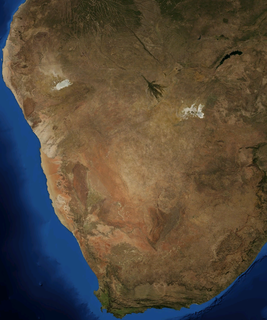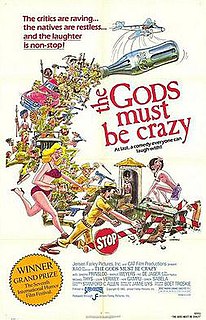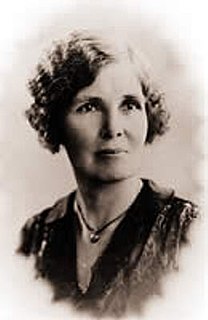James Suzman is an anthropologist and the author of Affluence Without Abundance: The disappearing world of the Bushmen published by Bloomsbury in 2017. He is the nephew of Janet Suzman and great-nephew of Helen Suzman. He is based in Cambridge, UK.
James Suzman is an anthropologist and the author of Affluence Without Abundance: The disappearing world of the Bushmen published by Bloomsbury in 2017. He is the nephew of Janet Suzman and great-nephew of Helen Suzman. He is based in Cambridge, UK.
Suzman was born in Johannesburg, South Africa, and educated at Michaelhouse. He graduated with an MA (Hons) in social anthropology from the University of St Andrews in 1993. He was awarded a PhD in social anthropology from the University of Edinburgh in 1996.
Suzman was the first social anthropologist to work in Namibia's eastern Omaheke among Southern Ju/'hoansi, where he exposed the brutal marginalisation of San people who had lost their lands to white cattle ranchers and pastoralist Herero people. [1] [2]
In 1998 Suzman was appointed to lead the landmark study, "The Regional Assessment of the Status of the San in Southern Africa", based on an ACP/EU resolution. [3] [4] [5]
Suzman later led an assessment by Minority Rights Group International to assess how Namibia's ethnic minorities had fared in the first ten years of Namibian Independence. The subsequent report was published in 2002. Emerging during period of political upheaval in Namibia, it led to calls for the better protection of ethnic minorities in Namibia. [6] [7] [8] The Namibian Government rejected the report's findings and the President, Sam Nujoma, accused Suzman of amplifying "ethnic tensions". [9]
In 2001, Suzman was awarded the Smuts Commonwealth Fellowship in African Studies at the University of Cambridge.
Suzman later established a program to establish opportunities for Hai//om San to benefit from tourism revenues in Etosha National Park. [10] He was also involved in the dispute that arose as a result of the illegal relocation of Gwi and Gana San from Botswana's Central Kalahari Game Reserve. He was highly critical of the Botswana Government's actions and, later, Survival International's campaign, which he claimed undermined ongoing negotiations between the Botswana Government and a coalition of organisations supporting the evicted San. [11] [12] [13] Survival International, in turn, criticised Suzman and members of the negotiating team led by Ditshwanelo, The Botswana Centre for Human Rights of complicity with the Botswana Government. [14] [15] [16]
In 2007, Suzman joined De Beers, where, as global head of public affairs, he developed the company's award-winning sustainability functions. [17] He resigned in 2013.
In 2013 Suzman and Jimmy Wales teamed up with Lily Cole to launch Impossible.com at the Cambridge Union.[ citation needed ] In the same year he was invited to deliver the second Protimos Lecture at the Parliament Chamber of London's Inner Temple. [18]
Suzman has published widely on San and other issues in academic journals, magazines and newspapers, including The New York Times . [19] In 2017 he published Affluence Without Abundance: The Disappearing World of the Bushmen .
Work: A History of How We Spend Our Time, was published in September 2020. [20] [21]

Botswana, officially the Republic of Botswana, is a landlocked country in Southern Africa. Botswana is topographically flat, with up to 70 percent of its territory being the Kalahari Desert. It is bordered by South Africa to the south and southeast, Namibia to the west and north, and Zimbabwe to the northeast. It it connected to Zambia across the short Zambezi River border by the Kazungula Bridge.

The Kalahari Desert is a large semi-arid sandy savannah in Southern Africa extending for 900,000 square kilometres (350,000 sq mi), covering much of Botswana, and parts of Namibia and South Africa.

The Khoisan languages are a group of African languages originally classified together by Joseph Greenberg. Khoisan languages share click consonants and do not belong to other African language families. For much of the 20th century, they were thought to be genealogically related to each other, but this is no longer accepted. They are now held to comprise three distinct language families and two language isolates.

Namibia, officially the Republic of Namibia, is a country in Southern Africa. Its western border is the Atlantic Ocean; it shares land borders with Zambia and Angola to the north, Botswana to the east and South Africa to the south and east. Although it does not border Zimbabwe, less than 200 metres of the Botswanan right bank of the Zambezi River separates the two countries. Namibia gained independence from South Africa on 21 March 1990, following the Namibian War of Independence. Its capital and largest city is Windhoek. Namibia is a member state of the United Nations (UN), the Southern African Development Community (SADC), the African Union (AU) and the Commonwealth of Nations.

De Beers Group is an international corporation that specialises in diamond mining, diamond exploitation, diamond retail, diamond trading and industrial diamond manufacturing sectors. The company is active in open-pit, large-scale alluvial and coastal. It operates in 35 countries and mining takes place in Botswana, Namibia, South Africa, Canada and Australia.

Survival International is a human rights organisation formed in 1969 that campaigns for the rights of indigenous and/or tribal peoples and uncontacted peoples.

Khoisan, or according to the contemporary Khoekhoegowab orthography Khoe-Sān, is a catch-all term for the non-Bantu indigenous peoples of Southern Africa, combining the Khoekhoen and the Sān or Sākhoen.

The Gods Must Be Crazy is a 1980 comedy film written, produced, edited and directed by Jamie Uys. An international co-production of South Africa and Botswana, it is the first film in The Gods Must Be Crazy series.

The South West Africa People’s Organisation, officially known as the SWAPO Party of Namibia, is a political party and former independence movement in Namibia. It has been the governing party in Namibia since the country achieved independence in 1990. The party continues to be dominated in number and influence by the Ovambo ethnic group.

The San peoples, or Bushmen, are members of various Khoe, Tuu, or Kxʼa-speaking indigenous hunter-gatherer groups that are the first nations of Southern Africa, and whose territories span Botswana, Namibia, Angola, Zambia, Zimbabwe, Lesotho and South Africa. In 2017, Botswana was home to approximately 63,500 San people, which is roughly 2.8% of the country's population, making it the country with the highest population of San people.

Debswana Diamond Company Limited, or simply Debswana, is a mining company located in Botswana, and is the world's leading producer of diamonds by value. Debswana operates four diamond mines in the eastern and central parts of Botswana, as well as a coal mine. Debswana is a joint venture between the government of Botswana and the South African diamond company De Beers; each party owns 50 percent of the company.
ǃKung (ǃXun), also known as Ju, is a dialect continuum spoken in Namibia, Botswana, and Angola by the ǃKung people, constituting two or three languages. Together with the ǂʼAmkoe language, ǃKung forms the Kxʼa language family. ǃKung constituted one of the branches of the putative Khoisan language family, and was called Northern Khoisan in that scenario, but the unity of Khoisan has never been demonstrated and is now regarded as spurious. Nonetheless, the anthropological term "Khoisan" has been retained as an umbrella term for click languages in general.

Ghanzi is a town in the middle of the Kalahari Desert the western part of the Republic of Botswana in southern Africa. The region is the country's pride in contributing a large portion towards the beef industry, in fact Ghanzi farmers provides about 75% percent of beef exports, according to the Botswana Meat Commission, primarily to the United Kingdom and the European Union

Central Kalahari Game Reserve is an extensive national park in the Kalahari Desert of Botswana. Established in 1961 it covers an area of 52,800 square kilometres (20,400 sq mi), making it the second largest game reserve in the world.
John Qace Hardbattle (1945-1996) was one of the best-known Bushman activists in Botswana. "Son of a half-Bushman mother, Khwa, and an English father, Tom Hardbattle",His father a retired policeman who traveled to South Africa and then Botswana. There he married "Kawi", John's mother. John Hardbattle co-founded and became leader of the First People of Kalahari (FPK).

New Xade is a village located in the central part of the Ghanzi District of Botswana. The population was 930 in 2001 census.
In the culture of the San, an indigenous people of Botswana, Namibia and Angola, healers administer a wide range of practices, from oral remedies containing plant and animal material, making cuts on the body and rubbing in 'potent' substances, inhaling smoke of smouldering organic matter like certain twigs or animal dung, wearing parts of animals or 'jewellery' that 'makes them strong.'

Dorothea Frances Bleek was a South African-born German anthropologist and philologist known for her research on the Bushmen of southern Africa.

The San, or Bushmen, are indigenous people in Southern Africa particularly in what is now South Africa and Botswana. Their ancient rock paintings and carvings are found in caves and on rock shelters. The artwork depicts non-human beings, hunters, and half-human half-animal hybrids. The half-human hybrids are believed to be medicine men or healers involved in a healing dance.” A painting discovered at Blombos Cave is thought to be the oldest known instance of human art, dating to around 73,000 years ago. Gall writes, “The Laurens van der Post panel at Tsodilo is one of the most famous rock paintings.” High on this rock face in Botswana is the image of a “magnificent red eland bull” painted, according to Van der Post, “only as a Bushman who had a deep identification with the eland could have painted him.” Also on this rock face is a female giraffe that is motionless, as if alarmed by a predator. Several other images of animals are depicted there too, along with the flesh blood-red handprints that are the signature of the unknown artist. The Drakensberg and Lesotho is particularly well known for its San rock art. Tsodilo was recognised as a UNESCO World Heritage Site in 2001; not all the art covered by this is by San people or their ancestors.
Ancestral land conflict over the Central Kalahari Game Reserve (CKGR) arose in the 1970s between the government of Botswana and the San people (Bushmen), and is ongoing, resulting in one of the most expensive court cases in the history of Botswana.
| Wikiquote has quotations related to: James Suzman |